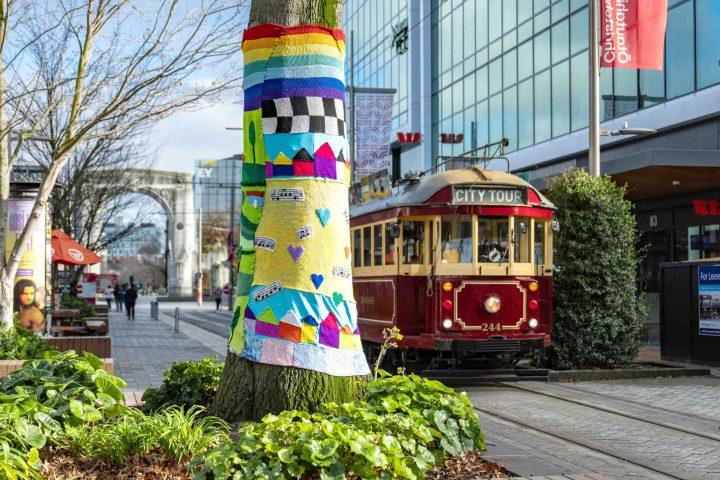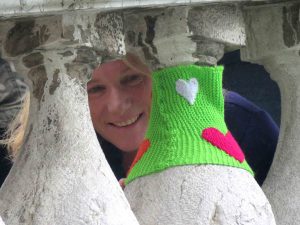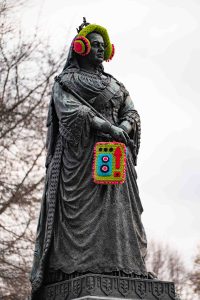
Knit one, purl one: The art of yarn bombing unravelled
What drives someone to cover a tree with an intricately knitted creation? Metropol writer Cheryl Colley spoke with Lynne Lawson, a Christchurch devotee of yarn bombing. 
When street benches turn into couches with soft knitted coverings, trees and public statues sprout colourful woollen coverings, it’s all to do with yarn bombing. Using knitted or crocheted yarn to cover typically public spaces often in magical and unexpected ways, yarn bombs are generally a brightly-coloured, warm and fuzzier version of graffiti, adding life, warmth, playfulness and a feeling of belonging to a community.
Yarn bombing is believed to have originated in the United States in 2005 with Texas knitters trying to find a creative way to use their leftover and unfinished knitting projects. Since then it has spread worldwide.
Lynne Lawson (pictured top right) first became involved with yarn bombing as part of a group in Tauranga, more than 10 years ago.
“I didn’t know anything about the craft at that time, but I Googled it and saw all the wonderful installations that people had made around the world over the years,” she recalls.
“The Tauranga group had permission to yarn bomb the trees in the main street of Greerton Village. Since then the village has become renowned for its yarn bombing installations woven around the numerous tree trunks. One prominent tree was even encased in a giant ball of wool complete with oversized knitting needles.” 
Her mother taught her to knit and sew. Lynne’s ambition was to be a fashion designer when she left school, but unfortunately that did not happen. Her creative side instead found its outlet in yarn bombing, for which she creates her own designs.
“I’ve modelled one tree covering design on a Wizard of Oz theme and another on Charlotte’s Web. Working to a theme excites me, and I simply freestyle knit all the elements I want to include on a piece. As you can imagine, to cover a tree trunk, these knits are often quite large and take a considerable amount of time to complete – sometimes months – but they can be taken down and used again in other environments.”
A couple of years ago Lynne moved to Christchurch and became involved with Christchurch practitioners of yarn bombing. Before that happened, she took her obsession overseas.
“On a holiday in Italy, I yarn bombed my way across the country! I went on that holiday fully intending to leave my mark on Italy. So I had in my luggage about seven different pieces already knitted up. All I had to take in addition was enough yarn and a needle to sew them on to the structures I selected. They went on to bridges and trees and posts and even on to a sculpture of a rhinoceros. I just thought it would be fun for people to see them and would give them pleasure. I left them all there. Perhaps they are there still!”
In June this year, Christchurch celebrated Worldwide Knit in Public Day with Yarnarchy, an Ōtautahi yarn bombing festival. More than 20 yarn bombs were installed around the central city tramline, including flowers, monster feet, a statue sporting a giant Walkman and earmuffs, street furniture turned into couches, a giant snake, a taniwha on the Worcester Street bridge and even a knitted bulldog called Cinnamonbun. 
On Cashel Street near the Bridge of Remembrance, Lynne has installed four large tree wraps each with her trademark different theme. Rather like Banksy, the installations are put up when there are few people around, so that the elements of surprise and delight are magnified.
“It was great to see them all up and to see everyone – from children to older people – coming to look at them and take pictures,” says Lynne. “There was wonderful feedback about just how lovely they all were. We hope that this festival will become an annual event here in Christchurch.”
Lynne is now also into the trend of painting rocks, often called kindness stones, to leave in parks, playgrounds and reserves. Like yarn bombing, this form of art, which has picked up popularity in recent years, is aimed to sprinkle positivity around communities.
IMAGES – Centuri Chan



